Qasr Bshir: A Roman Legacy in the Jordanian Desert
Introduction
Deep in the Jordanian desert, Qasr Bshir stands as an extraordinary relic of Roman imperial power. Recognized as one of the best-preserved Roman forts within the former empire, this historical site now faces urgent conservation challenges. Experts David Breeze, Mark Driessen, and Fawzi Abudanah explore the significance of Qasr Bshir and the efforts required to protect it.
ALSO READ: The Age of Decadence
The Journey to Qasr Bshir
Located approximately 80km south of Amman, Qasr Bshir is accessible via a tarmac road branching off Jordan’s Desert Highway, which soon transitions into a dirt track through an expansive and desolate landscape. The fort, initially appearing as a distant dark form on the horizon, gradually reveals itself as a square fortification with imposing corner towers. The isolation of the site raises fundamental questions: why was a Roman fort established here, what role did its garrison play, and how were supplies maintained?
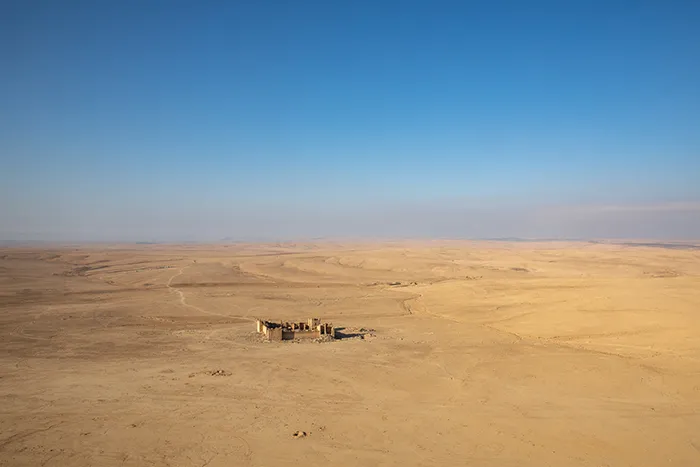
Architectural Significance
Qasr Bshir provides remarkable insights into Roman military architecture. Unlike many other Roman forts where imagination is required to reconstruct their former grandeur, Qasr Bshir remains exceptionally intact. Its four corner towers rise to an impressive height of 13 meters, and a Latin inscription over the main entrance—one of the last surviving examples still in its original position—commemorates the fort’s construction. However, this inscription is now cracked in two places, highlighting the fort’s urgent need for conservation.
Conservation Efforts
Efforts to address these concerns gained momentum following a visit on 29 September 2022 by scholars including Fawzi Abudanah, Mark Driessen, and David Breeze. Their observations of the deteriorating dedication slab prompted immediate action. HRH Prince Hassan of Jordan soon agreed to serve as patron of the newly established Qasr Bshir Conservation Project, with financial support secured from Richard Beleson to preserve the fort’s entrance. A network of international Roman scholars also pledged their backing to this initiative.
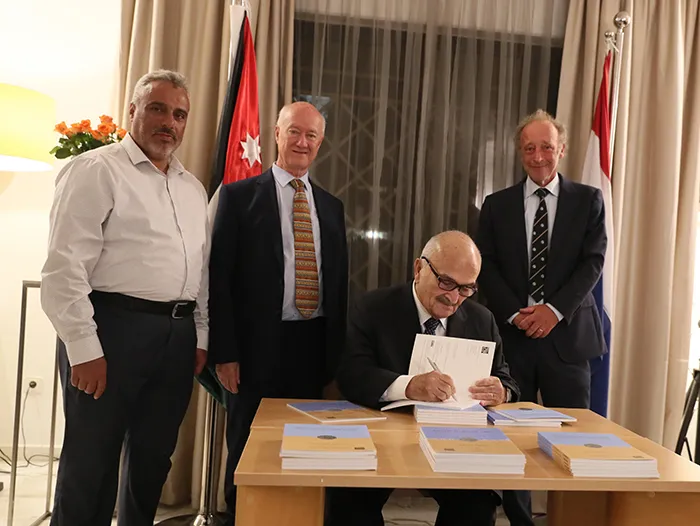
Historical Context and Strategic Importance
Qasr Bshir, officially known as Castra Praetorium Mobene, was constructed during the reign of Emperor Diocletian and his colleagues between AD 293 and 305 under the administration of the governor of the province of Arabia. Its foundation was part of a broader strategic initiative following a period of political and military turmoil in the empire. Diocletian’s restructuring of Rome’s eastern defenses was crucial in safeguarding against external threats, particularly from the Sassanid Persians and Saracen raiders. A network of forts was established along the empire’s frontier, with Qasr Bshir serving as a critical link in this defensive system.
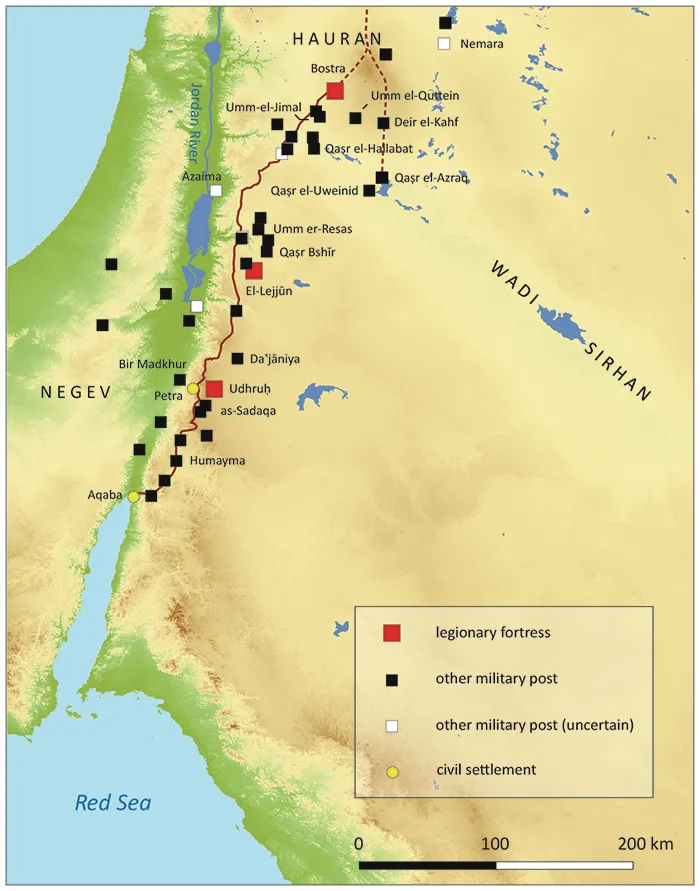
Fort Layout and Internal Arrangements
The fort’s design demonstrates its strategic and practical functions. Measuring approximately 57m by 54m, Qasr Bshir is relatively small by Roman fort standards but built from massive, megalithic stones that likely conveyed a sense of strength and dominance. The interior walls were plastered, and the corner towers contained three floors with rooms arranged around a central staircase. Remarkably, visitors today can still see features such as holes in the stone door jambs, which once secured doors with leather fastenings.

Strategic Role in Roman Defense
Despite its remote location, Qasr Bshir was not an isolated outpost but part of a larger military strategy. Although it was not directly connected to the Strata Diocletiana—the road linking many Roman forts further north—it formed a crucial component of the region’s defense. The fort’s elevated position provided excellent visibility in all directions except the south, reinforcing its surveillance and deterrence capabilities. Evidence suggests that the site was originally occupied by the Nabataeans before the Romans recognized its strategic value and established their fort.
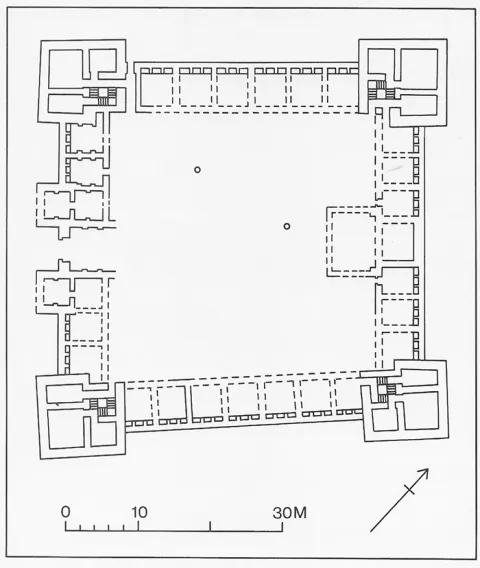
Water Supply and Logistics
Sustaining life in the arid desert posed logistical challenges, particularly regarding water supply. Without a nearby oasis, the Romans ingeniously constructed a reservoir about 600m from the fort to collect rainfall, supplemented by two internal cisterns within the courtyard. Historical climatic conditions were more favorable for agriculture than today, making survival at Qasr Bshir feasible. Horses, rather than camels, were the preferred mode of transport for the garrison, as the terrain was solid and well-suited for cavalry patrols.
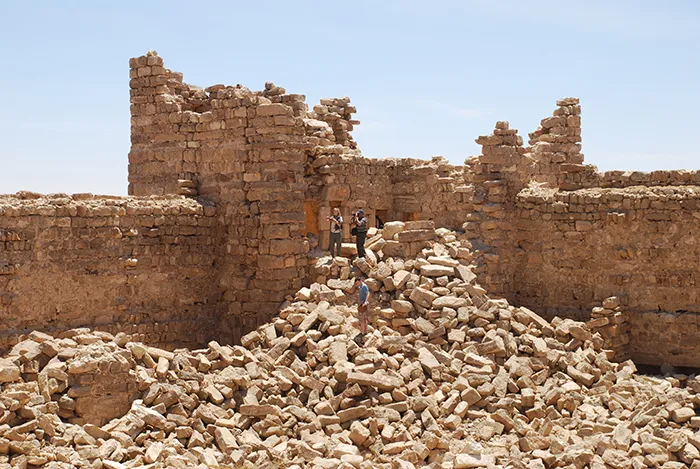
Supply Chains and Longevity
While details on supply logistics remain unclear, the Roman military’s renowned efficiency ensured that even remote outposts like Qasr Bshir were well-provisioned. The fort remained operational for over a century before eventually being occupied by the Umayyad Caliphate. Today, its enduring presence serves as a testament to the strategic foresight and engineering prowess of the Roman Empire.
Conclusion
With its unique architectural features, historical significance, and urgent conservation needs, Qasr Bshir stands as a vital cultural heritage site. Ongoing efforts to preserve its inscriptions and structural integrity will help ensure that this extraordinary relic continues to offer invaluable insights into Rome’s eastern frontiers for future generations.


